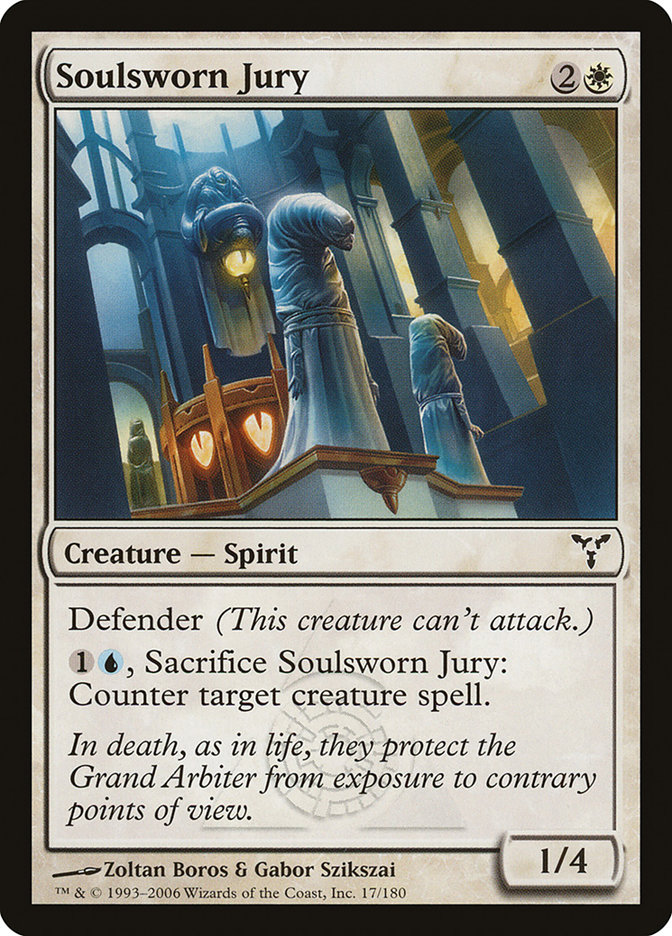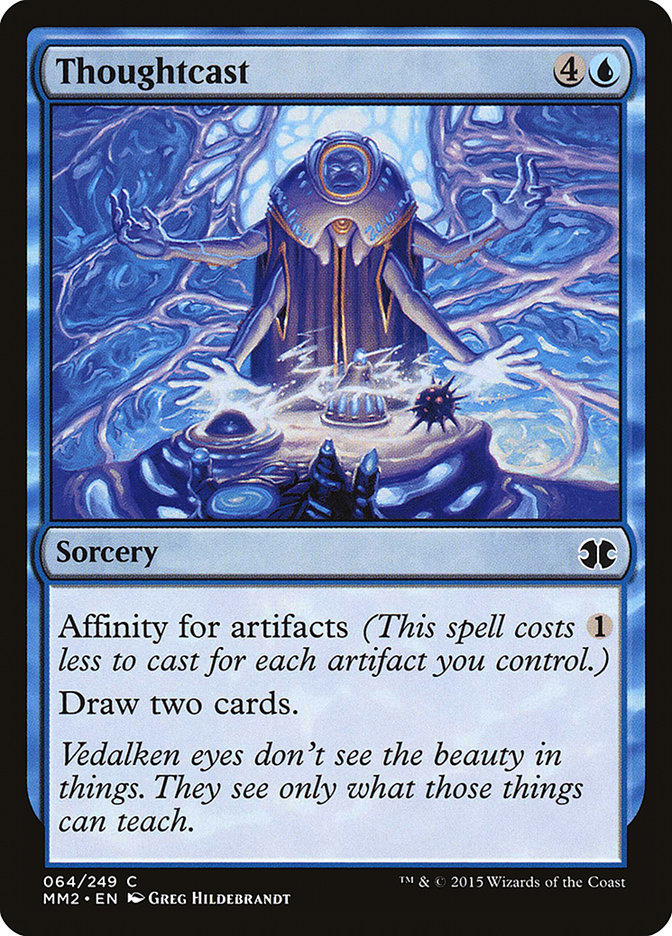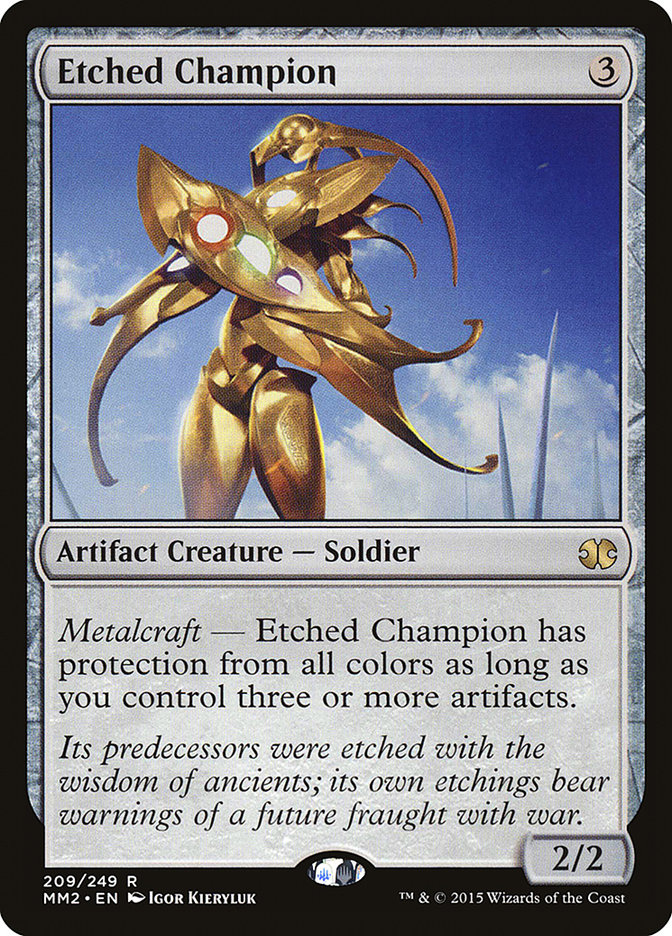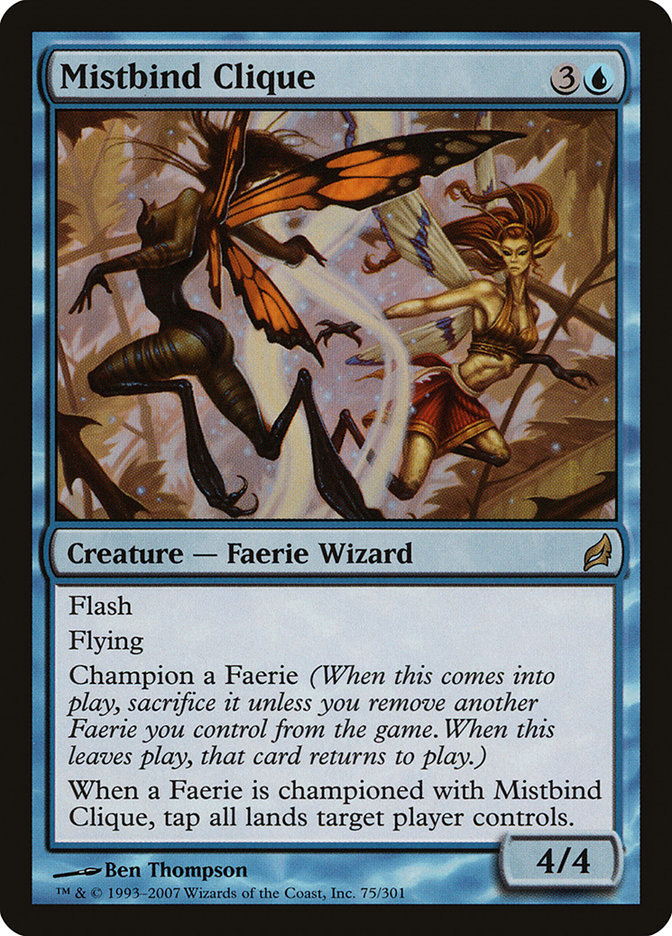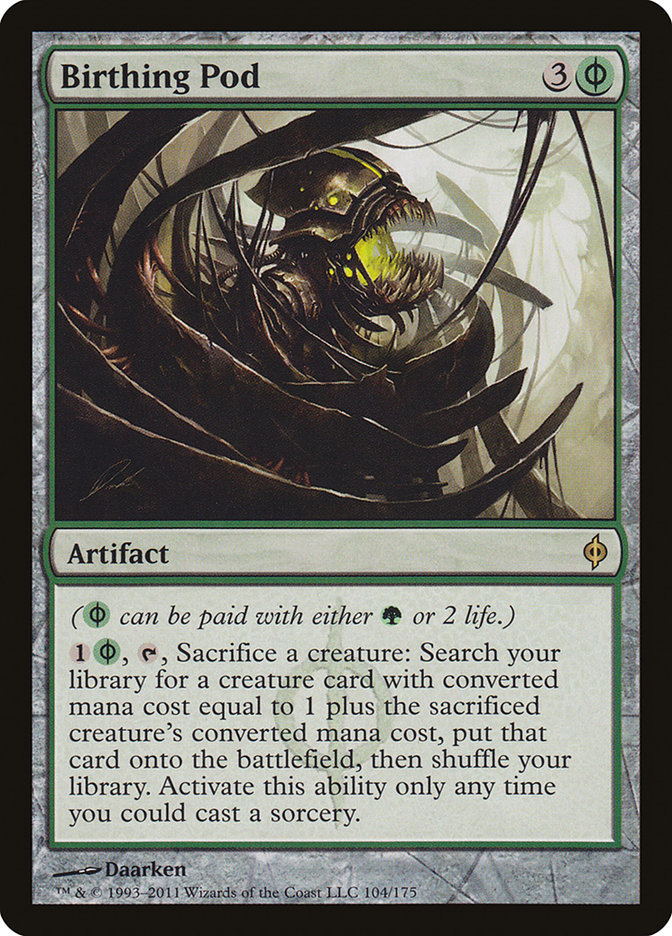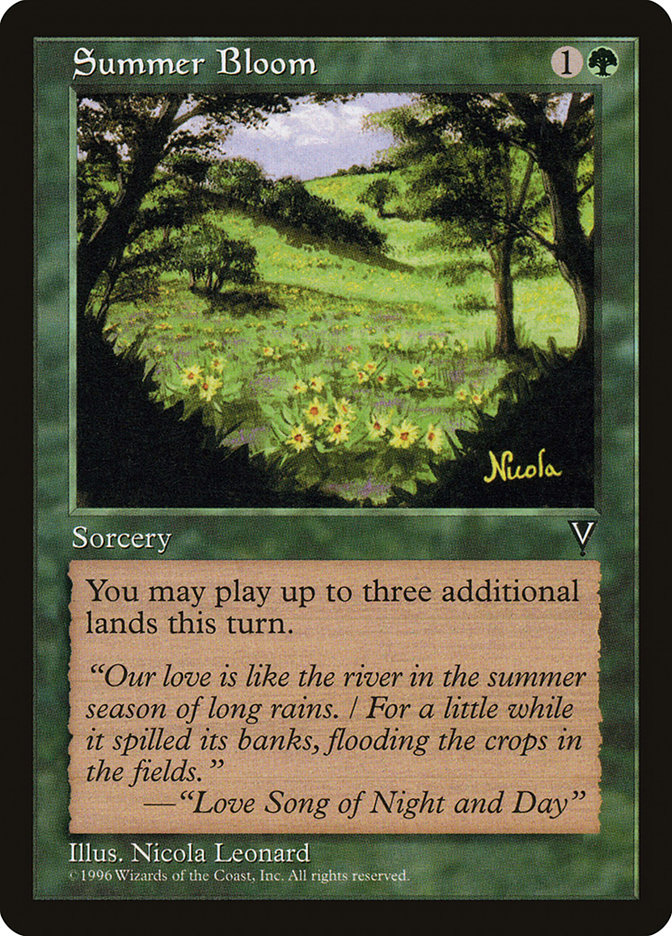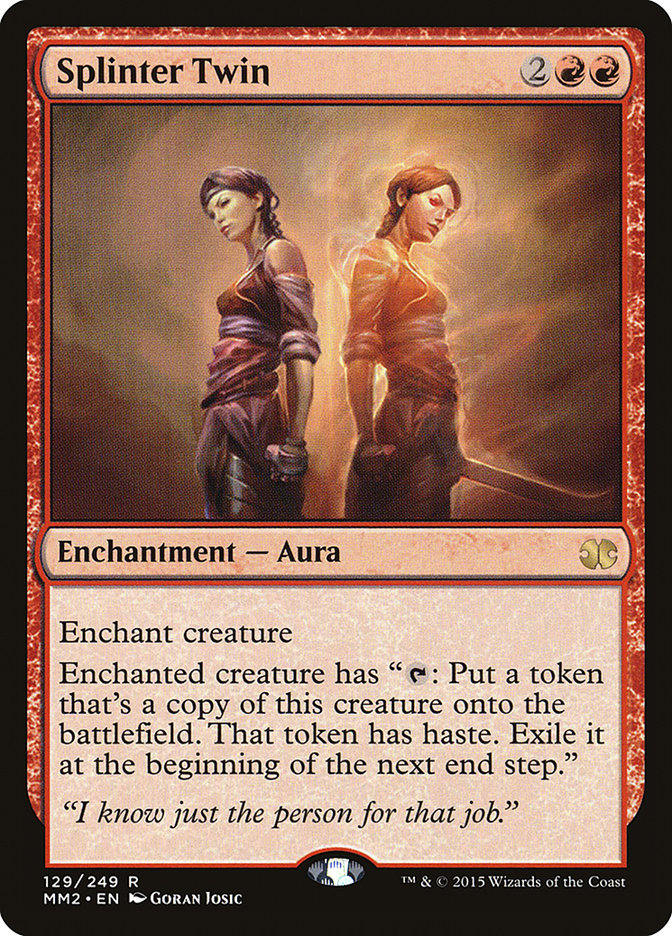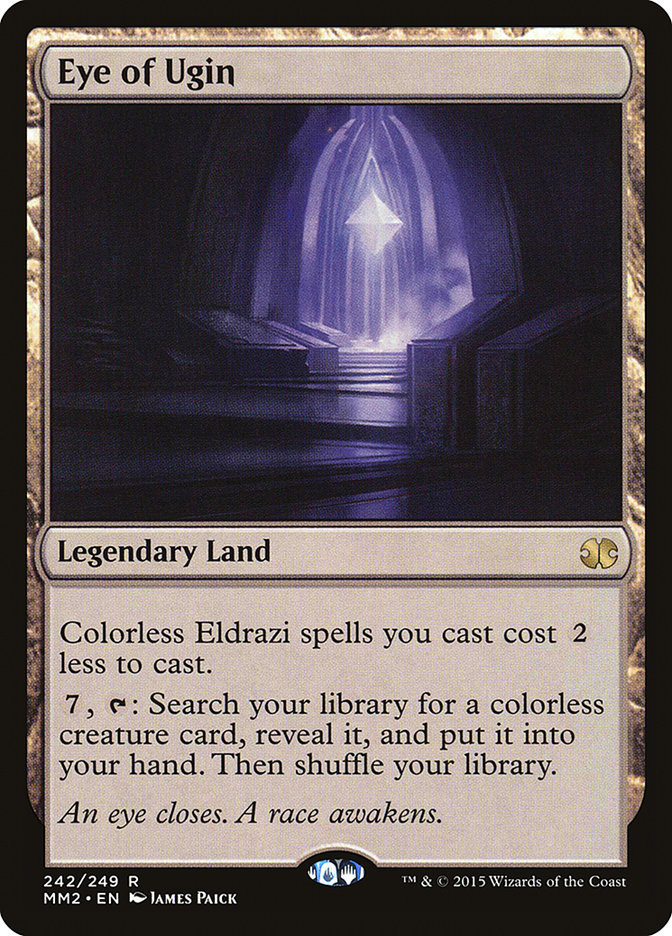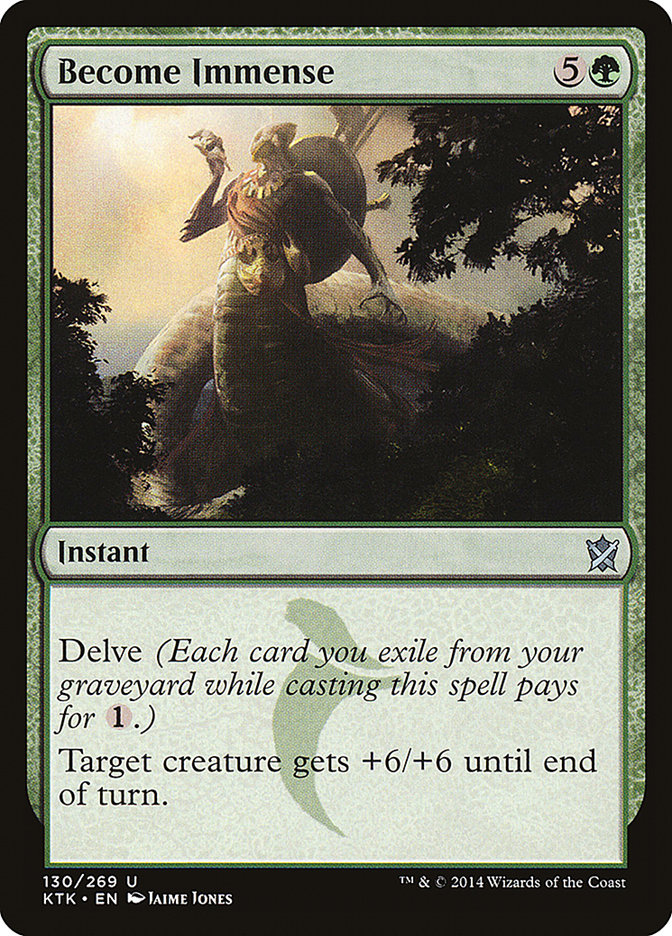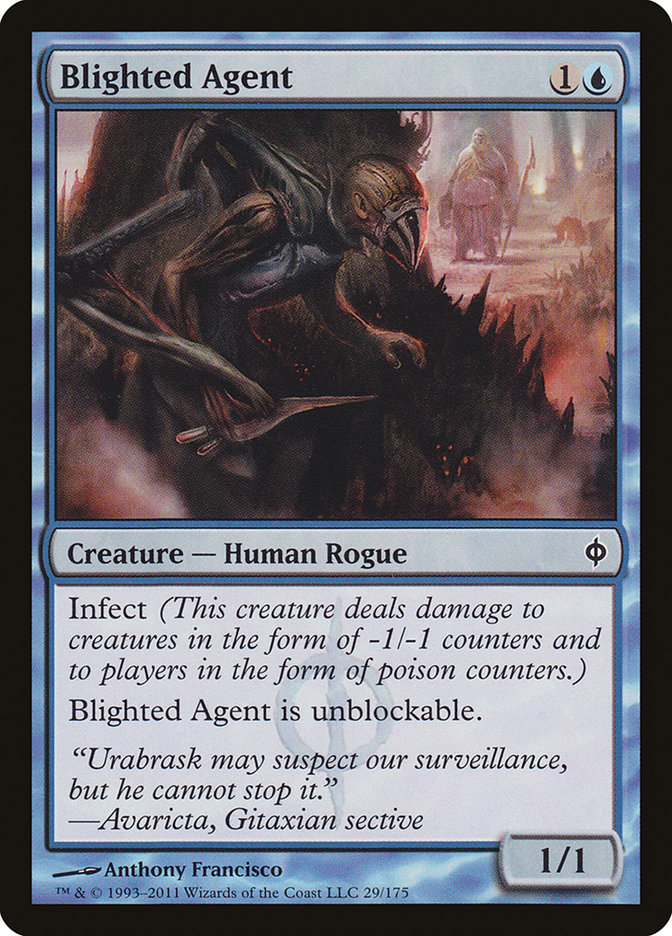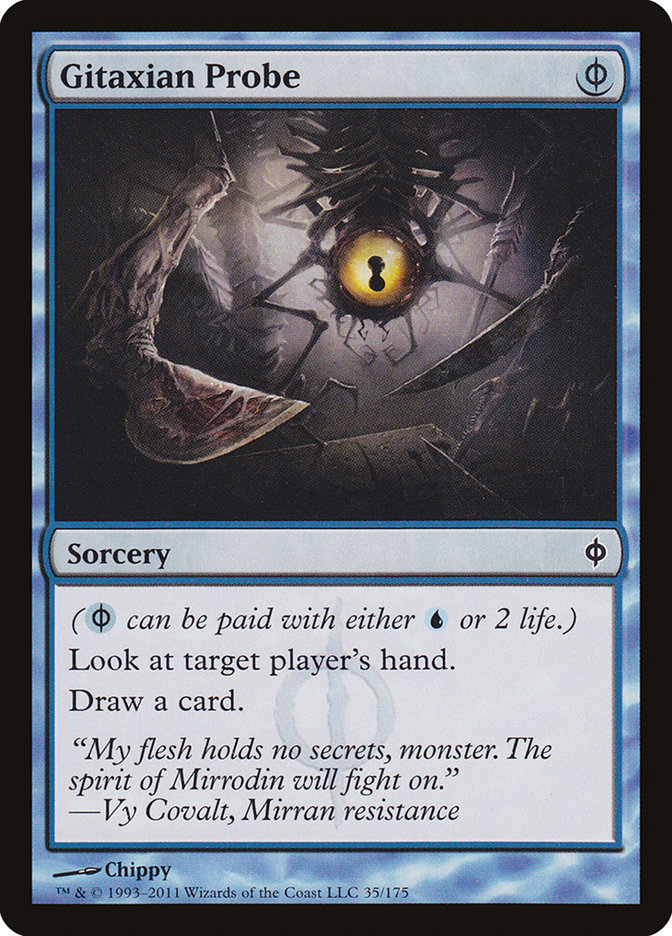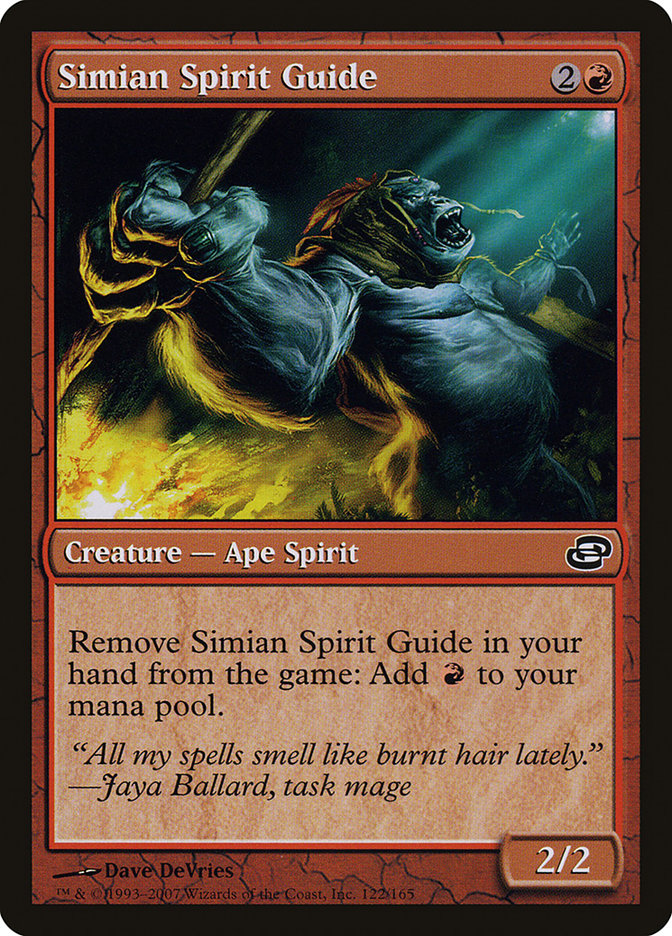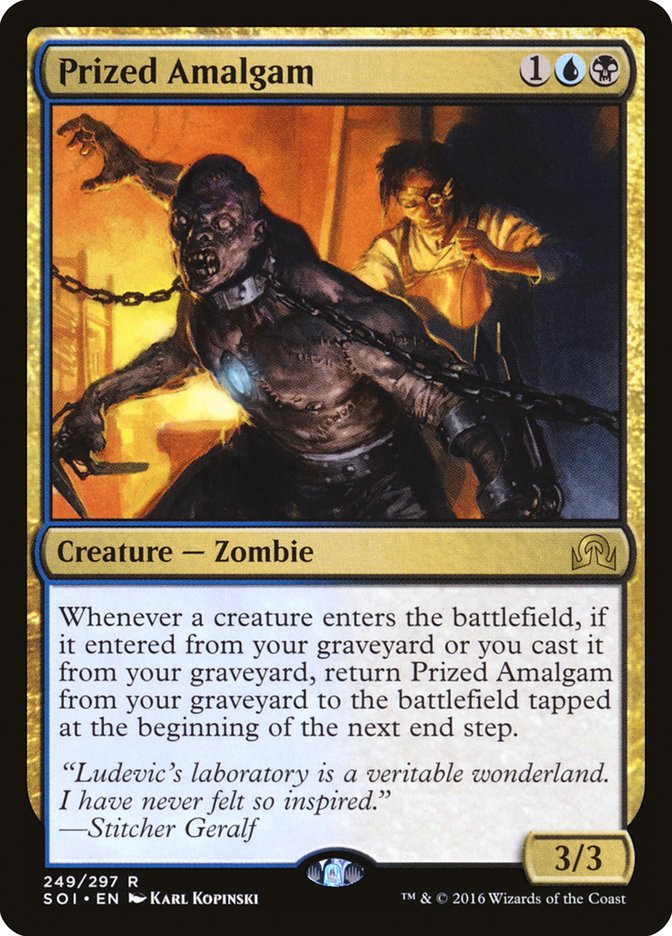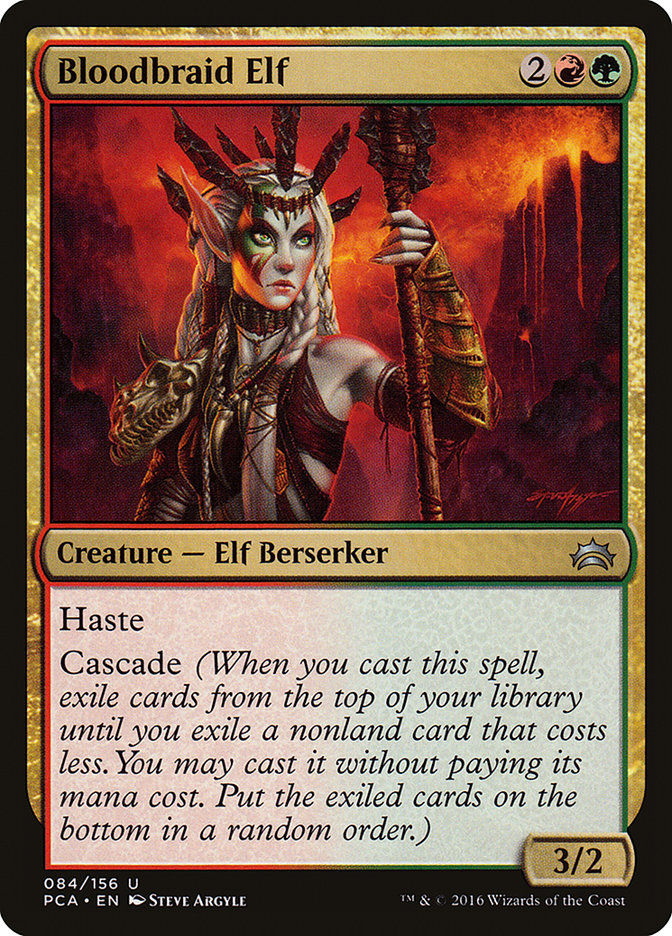It’s been made abundantly clear over the past couple of years that Modern as a format is here to stay. It’s only grown in popularity despite no major overhaul outside of periodic bannings. Oddly, though, the opinions of those who play it are inconsistent, with some considering it to be the best format and others believing its very existence a travesty. So what gives? Today I’m going to break down why I believe this format produces such polarizing opinions and exactly how I would move forward with the format as a whole.
Judge and Jury
The most prominent reason I’ve found for these hyperbolically diverse opinions on Modern is its high-variance nature. The format stretches all the way back to Mirrodin and still continues to grow with the printing of each new set. With so many cards comes the likelihood of broken combinations, which is why the format hosts such a large banned list. Cards end up on this list for many different reasons, but all center around the same philosophy, which is to create a dynamic and diverse format.
With so many bannings throughout Modern’s existence, the masses playing the format have developed a false sense of jurisdiction over its future. Through experience many have come to their own conclusions on how the format should function with their own opinions of what should be banned, unbanned, or left alone. It’s great that players are invested in a format’s future, but a common problem people have is confusing their opinions with facts. With so many radically different ideas floating around, a sense of divisiveness has emerged between those who like the format the way it is and others who want drastic change.
Love/Hate
I for one used to hate playing Modern. There were just too many decks that were far too powerful. The more powerful a format, the more quickly games can end, which causes the amount of cards you get to see to go down. I don’t want that! I want to see as many cards as I can throughout a long and exhausting game. That way, I get many more opportunities to make decisions that can eventually end in my victory.
You remember when people started calling me a Standard expert? That all started when Theros came out and we were introduced to the Temples. Those not only slowed the games down by entering the battlefield tapped but allowed us to see more cards and make more decisions, which would greatly improve chances of victory if the deck was built properly. I was unstoppable with Temples, but since then I have seen my win percentage drop significantly in Standard. Modern correlates in that vein quite nicely, since it’s difficult to have a high win percentage when you’re limited in the amount of cards you are allowed to see before the game ends.
My opinion of the format changed for the better once I internalized the fact that I just won’t win as much in Modern as I do in other formats. It might be cringeworthy to accept this at first, but once you do, it’s slightly freeing. Everyone wants to win, of course, but that doesn’t mean each format can be catered to each individual’s wants and needs. One of this format’s greatest strengths is the possibility to master a deck and do relatively well with it regardless of skill level. The speed and power of the format facilitates this.
Many of the game’s loudest voices come from a place of success. For example, an article similar to this one may exist out there with differing ideas, but this one is in the public eye because I’m Brad Nelson and write for StarCityGames.com. The same goes for discussions on Facebook, Twitter, or other social media. Many of those in the spotlight would want to mold Magic’s formats to better align with their wants and needs. In this example, that would be to make the format have less variance so that their win percentage would increase. Due to popularity, their voices carry much farther than others, and sometimes potentially wrong conclusions will come out of the massive echo chamber they and their followers have created.
This way of thinking is extremely shortsighted, and the increased growth and popularity of the format over the years proves it. Decisions about the health of Modern should come from a place of objective understanding of what’s healthy for the format and not what select individuals would prefer. I believe Wizards has done a great job of being able to listen to our concerns, but at the same time filtering out the disproportionate voices that may seem loudest. They understand for the most part what they want their product to accomplish, and up to this point have done a good job in execution.
I’ve played Magic for over a decade now, and over that time I’ve learned one simple truth about Magic players: the way one loses can subjectively change one’s opinion on the overall experience. One of those ways is whether or not they understand why they lost.
Take Affinity, for example: you obviously know why you lose games to this deck. Your opponent dumped over half their hand on the table on turn 1, with one of those cards being Steel Overseer. Some decks aren’t that cut-and-dried. Standard Faeries was one of them. The deck was relatively underpowered in nature, but its Flash-like capabilities would often sequence spells in a way that would leave an opponent losing a game of inches.
It was easy to see the lines to victory from the Faeries side of the battlefield but extremely frustrating from the opposing one. We currently have this same complex in Standard with W/U Flash.
Another way that losing can frustrate a player is the amount of turns it takes to go from “losing a game” to “lost a game.” Even though Splinter Twin deserved to be banned (more on that later), it wasn’t as detested as one would think. That’s because, once it assembled its combo, the game was over. The dance until then was rather close, and anyone’s game. Even though the deck was too good to exist, it still catered to fun and interactive gameplay. This is most likely why the deck lasted for as long as it did.
The same can’t be said about a deck like Eggs. That combo deck took a good ten minutes to fulfill all the requirements to win the game. Sitting and watching your opponent take over ten minutes to find a way to actually win is not what people pay for, and one of the reasons why Sensei’s Divining Top was banned.
The last tilting way to lose is the feeling that you still lost not matter what you did. Amulet Bloom was the perfect example of this, since often the deck would be disrupted a couple of times but somehow cobble together a game-winning sequence of plays, leaving the opponent clenching their fists. Interacting with non-creature combo decks is one of the most difficult things to do in a format as diverse as Modern, which is why we’ve seen so many of them banned or “nerfed” over the years.
Sometimes Wizards will ban cards that facilitate one of these miserable ways to lose, but more often than not, they get rid of strategies that go against what I consider the Golden Rule of Modern:
“No deck should be able to persevere through relentless targeting.”
The Formidable Five
Jund, Birthing Pod, Amulet Bloom, Splinter Twin, and Eldrazi all share one thing in common, which is they all continued to overperform no matter what the masses did to stop them.
This level of dominance causes the format to become stagnant with limited room for diversity and growth. If nothing outside of a banning is capable of stopping them, then a ban is exactly what’s needed. That’s why, even after years of limelight loathing, decks like Affinity and Tron continue to exist despite constant scrutiny. They may sometimes be annoying, but dedicated hate can keep them from taking over the format.
Within the parameters and personal beliefs I’ve used for my understanding of Modern, the format’s actually pretty healthy right now. Cathartic Reunion may have scared many of us initially, but the deck is losing ground as we continue to understand just how much we have to dedicate to beating Dredge. The days of a couple of copies of Relic of Progenitus or Nihil Spellbomb are past us, and cards like Ravenous Trap and Anger of the Gods have shifted into the format in a major way. The deck is still good, but nowhere near dominant.
The only deck that I believe actually breaks the “Golden Rule” right now is Infect.
The deck has done exceptionally well ever since Eldrazi was banned, but that isn’t the reason. Infect’s natural predators are Jund and Snapcaster Mage / Lightning Bolt decks, which exist but not in high numbers. Land-style decks like Primal Breach and Tron gained in popularity to combat Abzan and Bant Eldrazi but have continued to thrive thanks to the popularity of Dredge. These “go bigger” decks have made it more difficult for Snapcaster Mage and Jund to succeed, which in turn lets Infect thrive in the format. Splinter Twin was the only Snapcaster Mage deck that could compete against decks like this, but without it, the blue Goblin Piker is left to exist in fringe control decks.
That’s the reason why Infect can be good, but why it stays good is a whole other issue. The metagame is currently targeting it. It might not be doing so with the popularity of extremely hateful archetypes but rather an abundance of dedicated answers for the strategy. Even so, the deck continues to reach the highest levels of success by continuously putting multiple copies of the deck in the single-elimination rounds of major events like the SCG Tour and Grand Prix. It may not have done so in the past few Opens, so there are holes in my argument, but it doesn’t disprove the point that the deck has succeeded through targeted hate at a higher level than anything else in the format.
I will admit I may not have had this opinion if it weren’t for one specific card the deck plays, which is the only card that I believe needs to be banned in the format.
Gitaxian Probe is just not a card the format needs. It perpetuates consistent play patterns while also creating unfun situations for the opposition. It just ruins the fun when an opponent can no longer bluff the removal spells needed to stave off the lethal attack. Not only that, but the card is mainly used in decks that want to do degenerate things with Become Immense. Now, I fully believe Become Immense is a fair Magic card. It might be powerful, but so is Thoughtseize. Become Immense must target a creature and have that creature deal damage to a player to be considered too good. I don’t want to live in a world where we have to ban a pump spell from a format with 53 sets in it. I don’t mind if we take away easy ways to enable it, though.
There would be splash damage from a Gitaxian Probe ban in decks like Death’s Shadow, but does that deck really have to exist? It’s an amalgamation of so many random elements that it almost applies to the “how did I lose” way of losing. It’s a cool deck that I personally love playing, but that doesn’t mean it needs to exist. This ban would make the format a little less degenerate but would also solve the issue of Infect being too powerful in its current iteration. Infect would most likely still be a thing, but with fewer “easy button” wins.
Now, there’s a laundry list of cards that people want to see banned that I disagree with.
Save the Apes!
I actually love that the deck Ad Nauseam exists in the format. It’s a turn 4 combo deck that isn’t too dominant and can sometimes show up when things are actually getting too degenerate. It’s not great against midrange strategies like Jund, so it will never take over the metagame, but it’s nice to see a deck like this pop up when everyone is trying to interact as little as possible with one another.
Simian Spirit Guide does see play in other decks from time to time, and the intentions for playing with it are to be as fast and degenerate as possible, but that’s not a bad thing per se. Take a look at the difference between Titan Breach and Scapeshift. Titan Breach is trying to compete with the other combo decks by doing so at the same speed. The addition of Simian Spirit Guide gives them the potential speed they need to race decks like Infect, but at a significant loss of consistency. We’ve even seen Dredge begin to adopt this card, but the verdict is still out with some of the major Dredge advocates due to the loss of consistency the deck has.
We’ve already accepted that some of the biggest appeals to Modern are its diversity and aggressive nature. It’s actually nice to see decks be able to adjust the dials when necessary.
I agree that this card isn’t fun, but it’s not supposed to be. Blood Moon is a part of the Fun Police. Its job is to show up when needed and punish those who treat their manabases like a retirement fund. It’s also a nice safety valve for decks like Tron and Scapeshift which needs to exist, lest those Big Mana decks join the ranks of the Formidable Five. This might not be a fun card, but it has its complexities and interesting play patterns that come with the dance of sideboarding them in or out.
Get out of here with this one! Affinity is one of the oldest living decks in the format, and that’s because it can’t keep up with hate. Cards like Shatterstorm, Ancient Grudge, and Stony Silence all play a part in keeping this deck from ever taking over a format. Sure, it wins from time to time, but not a disproportionate amount compared to other major decks in the format. We may be sick of the deck due to its longevity in the format, but that isn’t enough of a reason to neuter it.
I could see this card eventually getting the axe, but not yet. Like I said earlier, Dredge has not proven to me just yet that it can stand the test of time. We are finally accepting the fact that minimal disruption isn’t good enough, and evolved plans to fight the deck are slowly being found. I would like to wait for another set to come out before considering chopping one of the deck’s legs off.
Unban My Heart
So now we get to what cards could come off the Banned List. Like everything else about this format, there are many varying opinions of what should be done. Shaheen Soorani for example wants to see Jace, the Mind Sculptor unbanned, claiming it’s not powerful enough to keep up with the format. While that may be true, what he’s forgotten is what exactly that card does and the potential risk it creates.
Jace, the Mind Sculptor allows decks to need less interaction before taking over the game. Since the card can easily win all by itself, decks can be built with more removal than normal, trying to just make it to four mana. Now, Big Mana decks would have a field day with this strategy, so I would predict a Blue Moon resurgence sporting Jace, the Mind Sculptor as one of its win conditions. Barf!
The only card that I believe could be taken off the Banned List and not drastically shift the metagame is Bloodbraid Elf. Much like Wild Nacatl, I believe this card was targeted for all the wrong reasons. Jund with Deathrite Shaman and Bloodbraid Elf was in fact too powerful to continue existing, but they tried to silence it with just a single Elven sacrifice at first. When that didn’t work, the true culprit was taken out, which was Deathrite Shaman.
Now, that one-mana Dark Elf shouldn’t come back, and in fact it should rot on that list forever, given how good it is, but Bloodbraid Elf might not even make that big of a splash if freed from its current prison. At four mana, green decks already have Collected Company and Siege Rhino (which they rarely play), Eldrazi is still sporting Thought-Knot Seer like the baller it is, and, well, Dredge gets to put unlimited power onto the table as early as turn 2. Why is this cascade 3/2 such a threat anymore? The answer is it’s not, and it could easily come off the list without much fear. And no, I’m not just saying that because I’m best friends with Jund Guy!
So do you agree with my assessment? If not, let me know what you think should get the axe or freed from WotC’s prison. I’m curious to know what you think about this topic!


